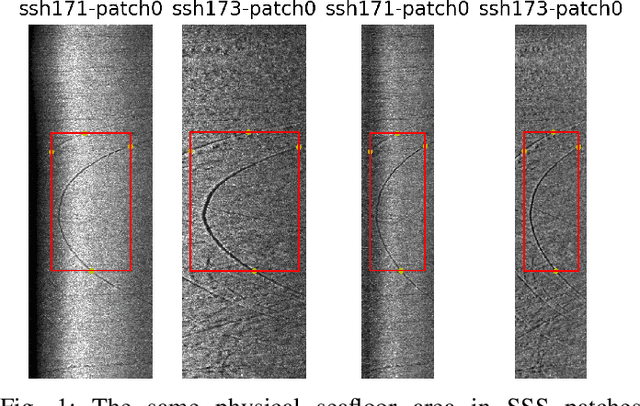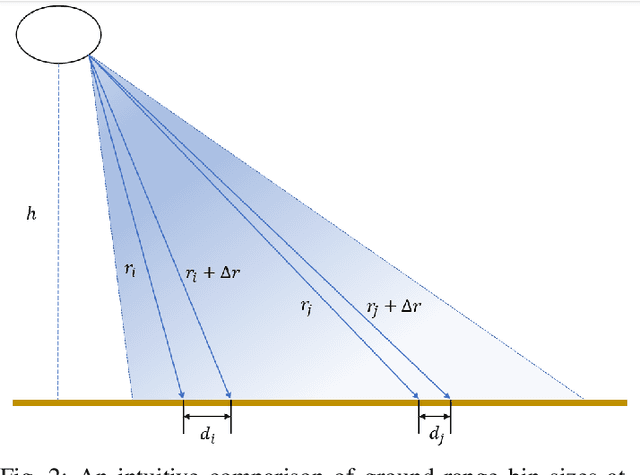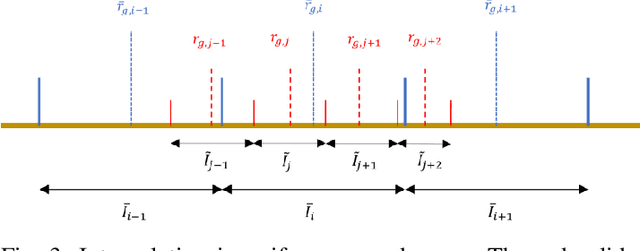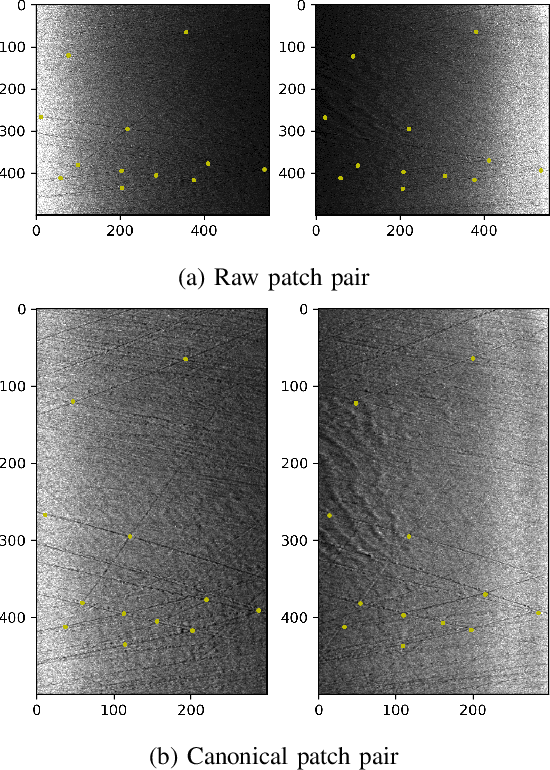Weiqi Xu
Evaluation of a Canonical Image Representation for Sidescan Sonar
Apr 18, 2023



Abstract:Acoustic sensors play an important role in autonomous underwater vehicles (AUVs). Sidescan sonar (SSS) detects a wide range and provides photo-realistic images in high resolution. However, SSS projects the 3D seafloor to 2D images, which are distorted by the AUV's altitude, target's range and sensor's resolution. As a result, the same physical area can show significant visual differences in SSS images from different survey lines, causing difficulties in tasks such as pixel correspondence and template matching. In this paper, a canonical transformation method consisting of intensity correction and slant range correction is proposed to decrease the above distortion. The intensity correction includes beam pattern correction and incident angle correction using three different Lambertian laws (cos, cos2, cot), whereas the slant range correction removes the nadir zone and projects the position of SSS elements into equally horizontally spaced, view-point independent bins. The proposed method is evaluated on real data collected by a HUGIN AUV, with manually-annotated pixel correspondence as ground truth reference. Experimental results on patch pairs compare similarity measures and keypoint descriptor matching. The results show that the canonical transformation can improve the patch similarity, as well as SIFT descriptor matching accuracy in different images where the same physical area was ensonified.
An Artificial Intelligence driven Learning Analytics Method to Examine the Collaborative Problem solving Process from a Complex Adaptive Systems Perspective
Oct 28, 2022Abstract:Collaborative problem solving (CPS) enables student groups to complete learning tasks, construct knowledge, and solve problems. Previous research has argued the importance to examine the complexity of CPS, including its multimodality, dynamics, and synergy from the complex adaptive systems perspective. However, there is limited empirical research examining the adaptive and temporal characteristics of CPS which might lead to an oversimplified representation of the real complexity of the CPS process. To further understand the nature of CPS in online interaction settings, this research collected multimodal process and performance data (i.e., verbal audios, computer screen recordings, concept map data) and proposed a three-layered analytical framework that integrated AI algorithms with learning analytics to analyze the regularity of groups collaboration patterns. The results detected three types of collaborative patterns in groups, namely the behaviour-oriented collaborative pattern (Type 1) associated with medium-level performance, the communication - behaviour - synergistic collaborative pattern (Type 2) associated with high-level performance, and the communication-oriented collaborative pattern (Type 3) associated with low-level performance. The research further highlighted the multimodal, dynamic, and synergistic characteristics of groups collaborative patterns to explain the emergence of an adaptive, self-organizing system during the CPS process.
 Add to Chrome
Add to Chrome Add to Firefox
Add to Firefox Add to Edge
Add to Edge